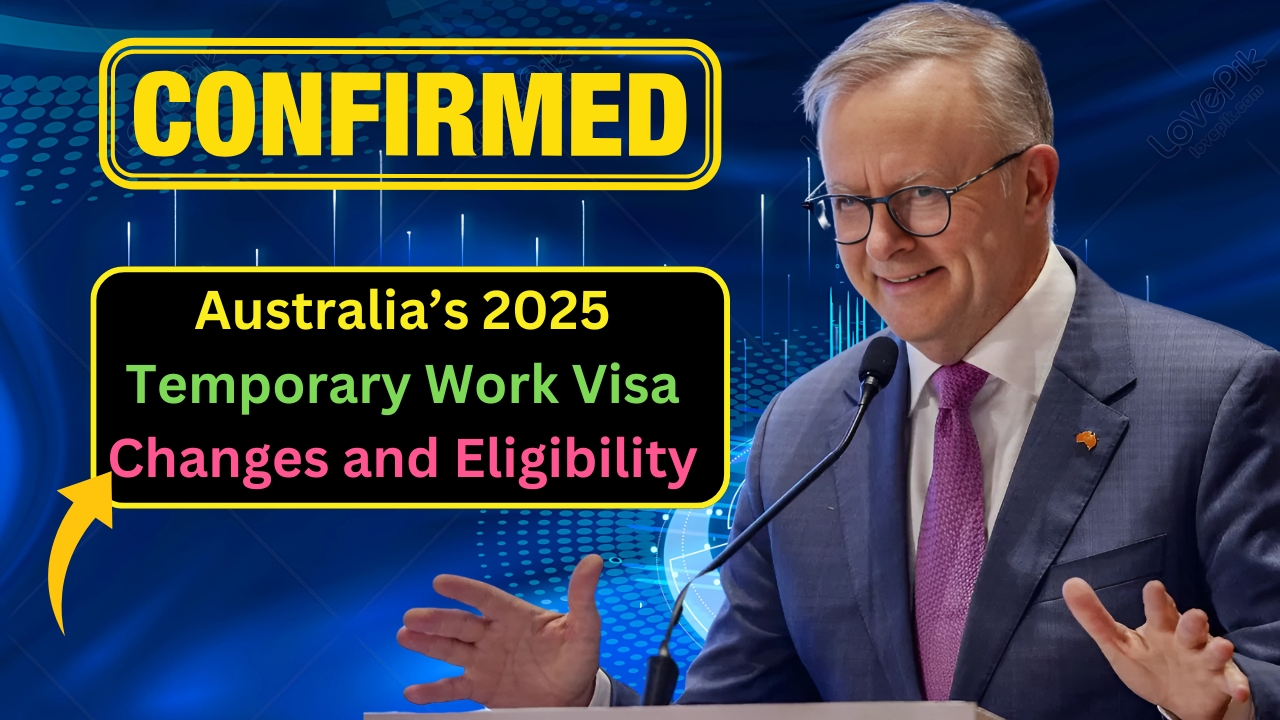Temporary Work Visa : Australia’s immigration landscape has undergone significant transformation in 2025, marking one of the most comprehensive reforms to temporary work visa systems in recent years. These changes reflect the government’s strategic approach to addressing critical workforce shortages while ensuring sustainable immigration levels that align with the nation’s economic priorities.
The Revolutionary Skills in Demand Visa System
The most groundbreaking change came into effect on December 7, 2024, when the Australian government officially launched the Skills in Demand (SID) visa, which has now formally replaced the Temporary Skills Shortage (TSS) visa. This transformation represents more than just a name change—it’s a complete reimagining of how Australia approaches temporary skilled migration.
Understanding this shift requires recognizing that the previous TSS visa system had become outdated and inflexible. The SID visa introduces three distinct streams designed to address different aspects of Australia’s labor market needs, making the entire system more responsive to economic demands.
Three Strategic Streams of the SID Visa
The SID visa operates through three carefully designed pathways, each targeting specific workforce needs. The Core Skills Stream targets areas with the greatest shortages, while the Specialist Skills Stream focuses on high-income, high-skill roles with a minimum income threshold of $135,000. The Labour Agreement Stream allows for specific industry agreements.
This three-pronged approach allows employers and skilled workers to find the most appropriate pathway based on their circumstances. The Core Skills stream serves as the primary route for most skilled workers, addressing widespread labor shortages across various industries. Meanwhile, the Specialist Skills stream attracts top-tier talent in highly specialized fields, ensuring Australia remains competitive in the global talent market.
The New Core Skills Occupation List Revolution
Central to these reforms is the introduction of the Core Skills Occupation List (CSOL), which is a single consolidated list informed by labour market analysis and stakeholder consultations by Jobs and Skills Australia that provides access to temporary skilled migration for 456 occupations.
This represents a significant departure from the previous complex and outdated occupation lists. The CSOL was developed through comprehensive analysis of business recruitment activity, economic data, and extensive stakeholder submissions, ensuring it accurately reflects Australia’s current and future workforce needs.
Enhanced Flexibility and Opportunities
The CSOL will be applicable to the Core Skills stream of the new SID and will also apply to the Direct Entry stream of the permanent Employer Nomination Scheme (subclass 186) visa. This integration creates a more streamlined pathway from temporary to permanent residence, addressing one of the key criticisms of the previous system.
The list’s design ensures that skilled migrants can access opportunities across a broader range of occupations while maintaining the integrity of Australia’s skilled migration program. This balance between accessibility and selectivity reflects Australia’s commitment to attracting genuine skilled workers who can contribute meaningfully to the economy.
Reduced Barriers and Enhanced Accessibility
One of the most significant practical changes involves the reduction of work experience requirements from two years full-time to one year, making the visa more accessible to younger professionals and recent graduates. This change recognizes that valuable skills and potential don’t always correlate directly with years of experience.
Additionally, the reforms include enhanced mobility provisions that provide greater flexibility for visa holders. Visa holders who cease work with their sponsoring employers now have up to 180 days at a time (increased from 60 days) and a maximum of 365 days in total across their entire visa grant period to find a new sponsor, apply for a different visa, or depart Australia.
Income Threshold Adjustments
The government has also implemented annual indexation of income thresholds, ensuring that compensation requirements remain aligned with economic trends. Income thresholds for SID visas will now be indexed annually, ensuring alignment with economic trends. This approach provides predictability for both employers and visa applicants while maintaining fair compensation standards.
Streamlined Pathways to Permanent Residence
Perhaps one of the most attractive aspects of the new system is the enhanced pathway to permanent residence. All SID visa holders have a pathway to permanent residence through the Temporary Residence Transition stream of the Subclass 186 Employer Nomination Scheme, after two years of employment in Australia in the three years immediately before the application.
Importantly, this qualifying period can be completed with any employer, not just the original sponsoring employer. This flexibility recognizes the dynamic nature of modern career paths and allows skilled workers to build their Australian experience across different organizations while still qualifying for permanent residence.
Recognition of Previous Experience
All periods of sponsored employment as a primary TSS/SID visa holder count towards this qualifying period, ensuring that individuals who entered Australia under the previous system aren’t disadvantaged by the reforms. This grandfathering approach demonstrates the government’s commitment to fairness and continuity.
Student Visa Reforms and Restrictions
The 2025 changes extend beyond work visas to include significant student visa reforms. The Department of Home Affairs will no longer accept Letters of Offers from individuals applying within Australia for a student visa after 1 January 2025, with onshore visa applicants now required to include a Confirmation of Enrolment (CoE) when submitting an application.
These changes aim to prevent visa abuse and ensure that student visa applicants demonstrate genuine commitment to their studies. The requirement for a CoE before application submission represents a significant shift from previous practices and requires prospective students to plan more carefully.
Impact on Visa Pathways
Temporary graduate (subclass 485) visa holders can not apply for a student visa (subclass 500) onshore, representing a significant restriction on traditional visa-hopping practices. This change encourages more strategic planning of visa pathways and reduces the potential for system abuse.
Regional and Specialized Programs
Australia has also introduced targeted programs to address specific workforce needs. The Mobility Arrangement for Talented Early-professionals Scheme (MATES) for Indian nationals allows eligible Indian nationals to live and work in Australia for up to two years, addressing labour shortages and supporting economic growth.
These specialized programs demonstrate Australia’s recognition that different regions and countries offer unique talents and skills that can benefit the Australian economy. By creating targeted pathways, Australia can more effectively address specific labor market gaps while strengthening international relationships.
Future Outlook and Ongoing Reforms
The 2025 changes represent just the beginning of Australia’s immigration modernization efforts. Currently, consultation is taking place to explore how the points test can be amended to attract skilled migrants to Australia, with potential changes expected throughout the year.
These reforms reflect Australia’s commitment to maintaining its position as a global leader in skilled migration while ensuring that the immigration system serves the nation’s long-term economic and social objectives. The emphasis on flexibility, fairness, and economic alignment positions Australia to continue attracting top global talent.
The government’s approach demonstrates a sophisticated understanding of modern labor markets and migration patterns. By creating more flexible, responsive systems while maintaining integrity and fairness, Australia is setting new standards for skilled migration programs globally.
Frequently Asked Questions
Q: When did the Skills in Demand visa replace the TSS visa? A: The SID visa officially replaced the TSS visa on December 7, 2024, with all new applications now processed under the SID system.
Q: How long do SID visa holders need to work before applying for permanent residence? A: SID visa holders can apply for permanent residence after two years of employment in Australia within a three-year period, with any sponsored employer.
Q: What is the minimum income threshold for the Specialist Skills stream? A: The Specialist Skills stream requires a minimum income threshold of $135,000, targeting high-skill, high-income positions.

